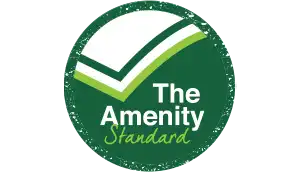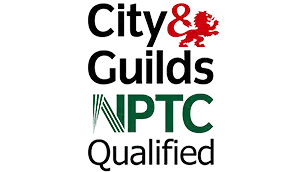Red Thread
By FAR the most common (but often short lived) disease that domestic lawn grass suffers
Although more common on lawns laid from turf than those sown from seed it can affect all lawn types when conditions favour it: Times of mild temperature and high humidity & lawn surface moisture favour this disease which arrives on an airborne spore.
It can be treated (at significant cost) with an anti-fungal agent. But as it is very unlikely to cause lasting lawn damage most customers prefer to wait for it to grow out naturally. This can be sped up with a timely application of fertiliser containing readily available N (nitrogen)
If your Lawn is prone to Red Thread, disease limitation if not outright prevention can be achieved by:
- Keeping your mower blades very sharp.
- Not irrigating in the evenings, as leaving the lawn wet overnight favours fungal activity.
- Using wetting agents to help the soil absorb moisture.
- Having your lawn regularly Aerated and Scarified


Turf Diseases
Though not found very often in domestic lawns, there are a number of diseases which can afflict grasses in the UK. The vast majority of these are fungal and will be active (harmful to grass) in times of high humidity. Some turf diseases are encouraged by poor fertiliser regimes, for example “Fusarium Patch” is most likely to appear on a lawn receiving excessive doses of Nitrogen (N). But generally if the disease is entering the grass through the sword it can be treated with an anti-fungal agent. The list of diseases falling into this category include :-
- Fusarium
- Dollar Spot
- Snow Mould
- Leaf Spot
When the disease (or fungal infection) is in the soil, and creating an environment in which the grass in unable to live healthily, as is the case with “fairy Rings” and “Take All Patch” the provision of effective treatment is not always possible. We may be able to alleviate some problems with a combination of Aeration, anti-fungal and wetting agents but this is an imprecise science. In situations where grass condition is paramount and money plentiful (such as a golf green) the soil itself is usually dug out to a substantial depth, replaced and grass re-sown. This is not something we have yet found to be required on a domestic lawn.
Mushrooms and Toadstools
These types of fungi appear from time to time on most lawns to some degree. They are not harmful to grass and normally only present for very short periods of time. We do not recommend that any form of treatment be applied to them. If they do concern you, the best way to minimise their recurrence is to carefully remove them by hand, thus reducing the number of fresh spores / pathogens that they are able to distribute.




